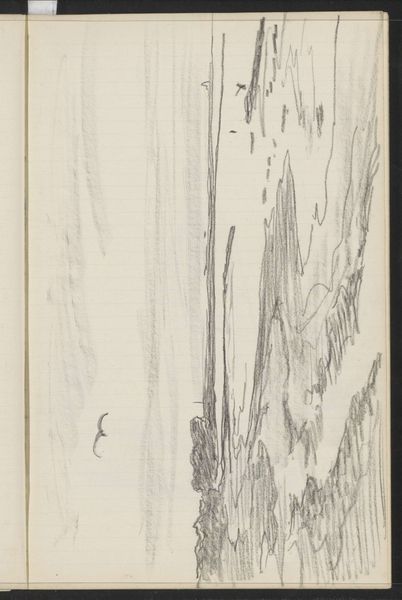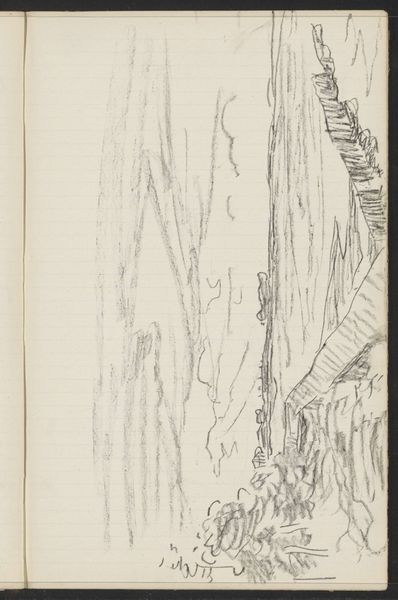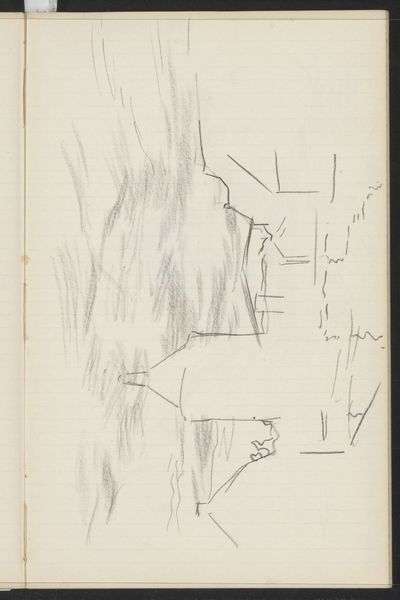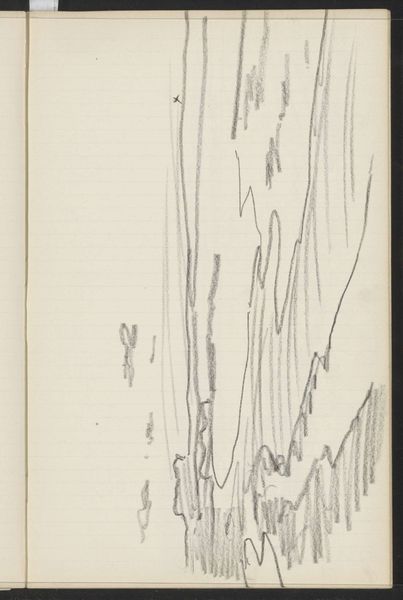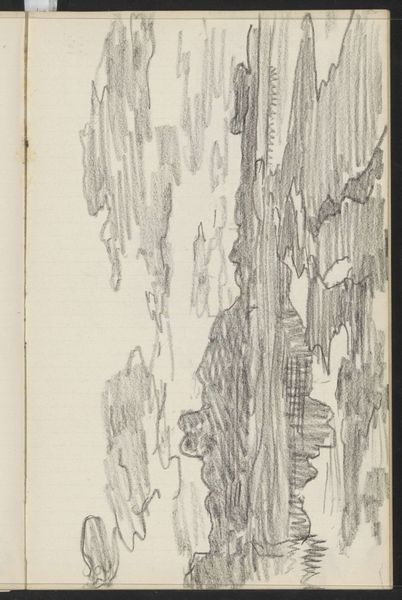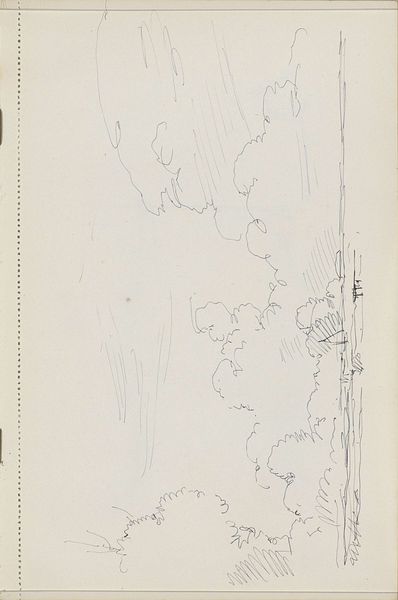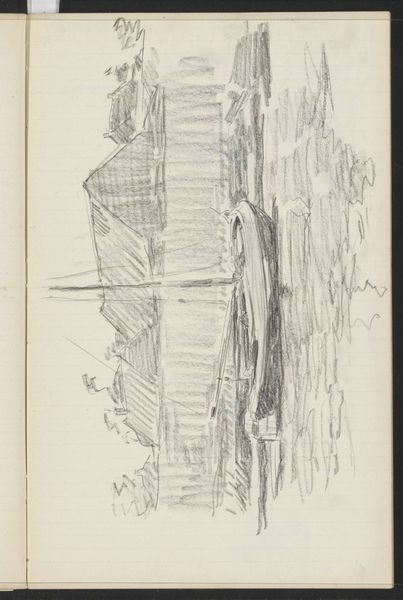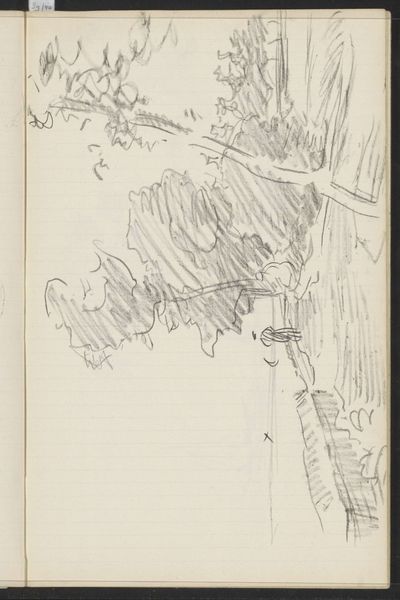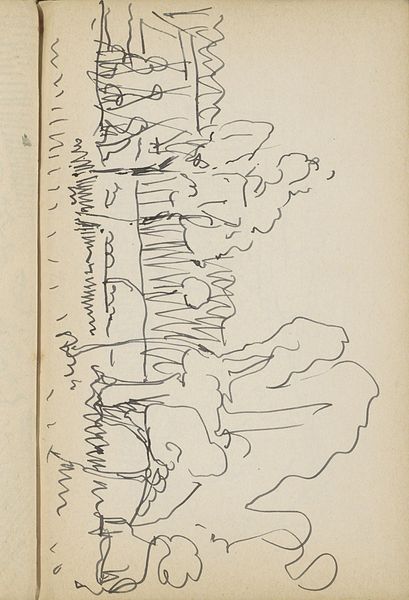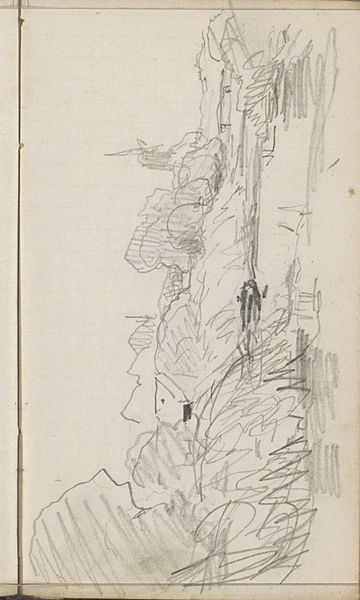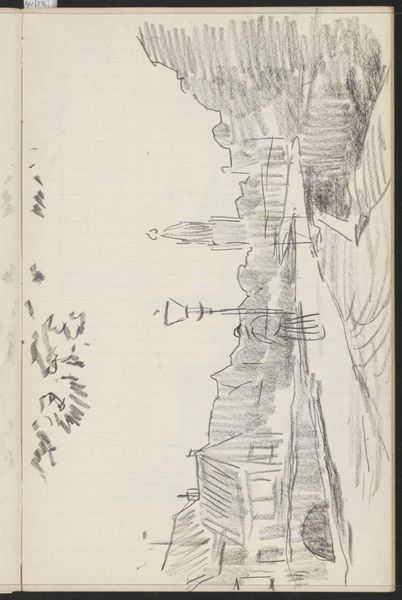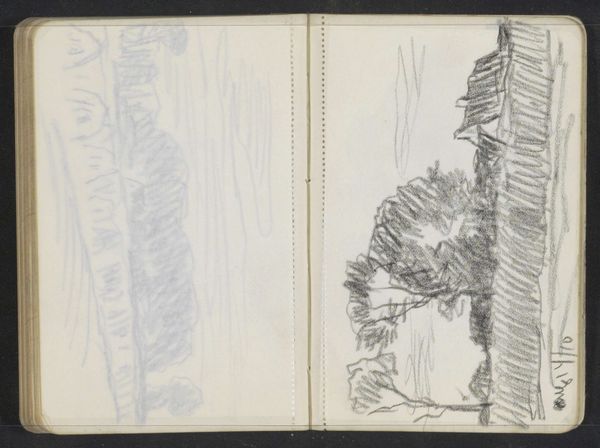
drawing, paper, pencil, graphite
#
drawing
#
landscape
#
paper
#
pencil
#
graphite
Copyright: Rijks Museum: Open Domain
Editor: We are looking at “Zandlandschap,” or "Sand Landscape" by Willem Bastiaan Tholen, dating from between 1900 and 1931. It’s a graphite and pencil drawing on paper. It has a sketch-like, almost ephemeral quality to it. How do you read this piece? Curator: Considering the period and Tholen's position within the art world, I see this as a glimpse into the development of landscape painting beyond traditional academic representation. Think about the burgeoning ecological awareness in the early 20th century, or the development of places as attractions for tourism. Do you see any reflection of that here, perhaps in the raw immediacy of the sketch? Editor: It definitely feels like a personal observation, a quick capturing of a scene rather than a staged representation. The marks feel honest and unfiltered. Is that common in landscape art from that era? Curator: What strikes me is how Tholen subverts the conventional landscape, devoid of grand narratives or heroic figures. Landscape paintings had to justify themselves; did this space warrant capturing on paper? Why reduce it down to graphite on paper? How does this impact our modern reading of the work, knowing that spaces like this one may have completely vanished? Editor: That’s a very sobering thought. The transience of the medium reflecting the possible disappearance of the actual landscape. So, it's a commentary on the changing environment as well? Curator: Possibly. Or at the very least, a quiet observation of a space that might otherwise go unnoticed. These sketchbook landscapes become valuable records, revealing both the artist's perspective and the socio-environmental context of the time. Editor: That gives me a completely new perspective on what I initially saw as just a quick sketch. I’ll never look at a landscape drawing the same way again. Curator: Indeed, it encourages us to look deeper, beyond the surface beauty, and consider the historical and cultural narratives embedded within.
Comments
No comments
Be the first to comment and join the conversation on the ultimate creative platform.
